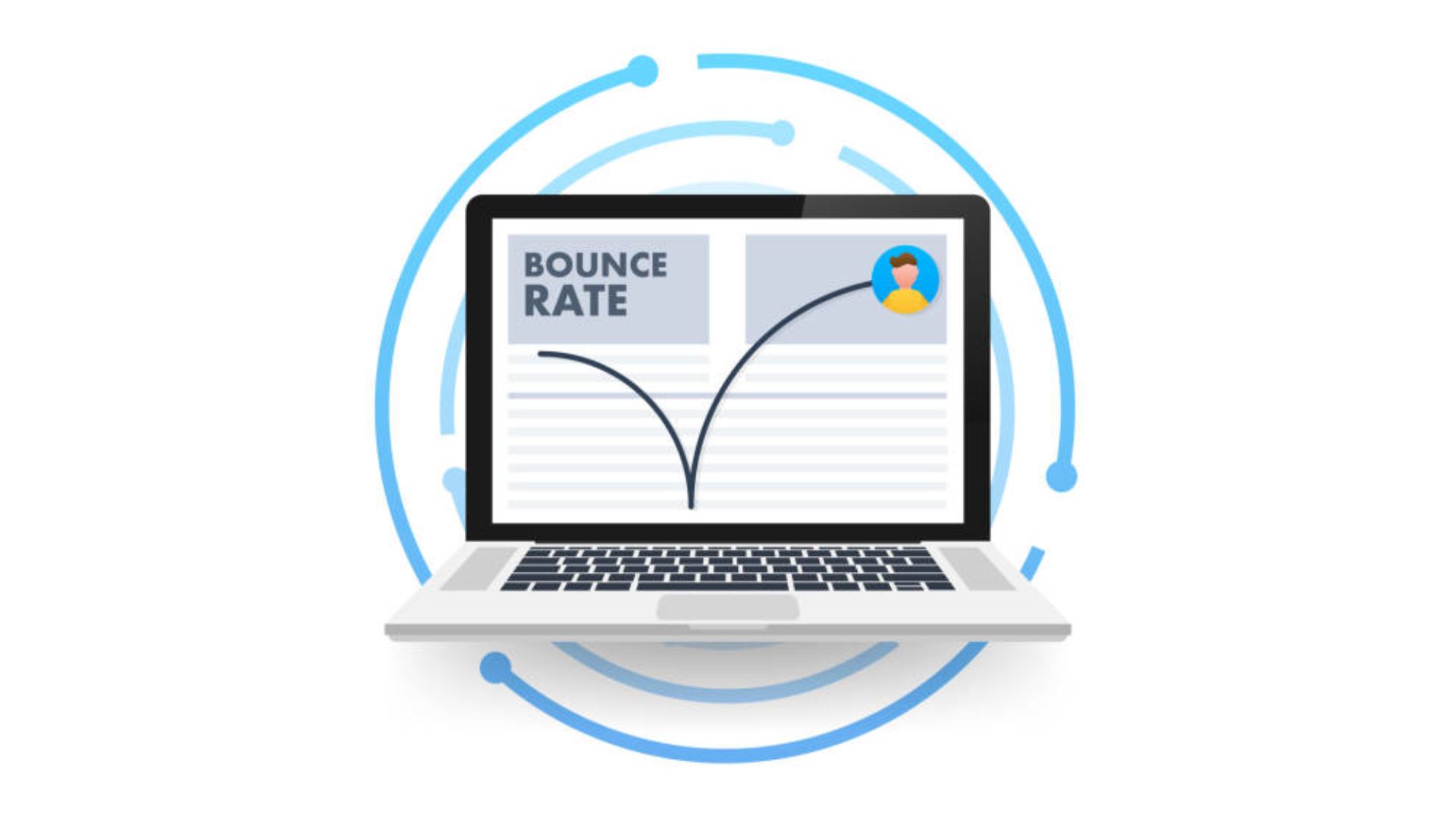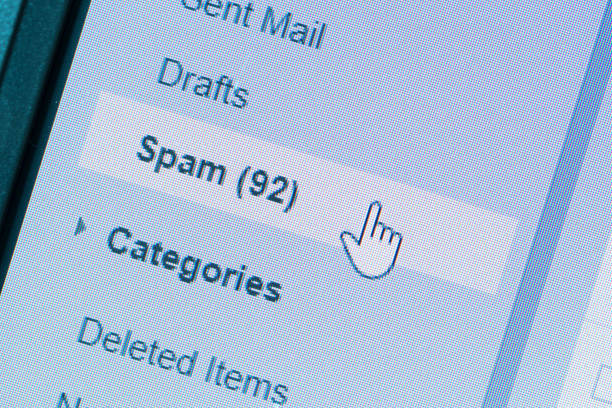De acordo com um estudo recente realizado pelo Influencer Marketing Hub, apenas 79,6% dos e-mails autênticos chegam ao destinatário pretendido. [1] Portanto, esta postagem do blog fornecerá tudo o que você precisa saber sobre a capacidade de entrega de e-mails e insights essenciais para garantir que seus e-mails cheguem ao lugar certo, ou seja, à caixa de entrada do destinatário!
Atualmente, o e-mail tornou-se uma parte essencial de nossa vida profissional e pessoal. Entretanto, enviar um e-mail é apenas uma parte do quebra-cabeça. Garantir que ele chegue ao público-alvo e não à pasta de spam é outra parte.
Portanto, se você estiver interessado em saber como evitar a pasta de spam, continue lendo!
O que é entregabilidade de e-mail?
A capacidade de entrega de e-mail é a taxa na qual seu e-mail chega às caixas de entrada dos destinatários. Quando um e-mail é devolvido ou filtrado automaticamente em uma pasta de spam, sua taxa de entregabilidade pode diminuir.
Além disso, toda campanha de marketing por e-mail deve ter como objetivo melhorar a capacidade de entrega, pois somente assim outras métricas, como aberturas e cliques, serão fundamentais.
A capacidade de entrega de suas campanhas de e-mail também depende dos provedores de caixa de entrada (IBPs), como Yahoo, Gmail e Outlook. Os e-mails que estiverem em conformidade com os protocolos IBP aparecerão na guia principal, mantendo uma alta taxa de capacidade de entrega.
No entanto, entrega de e-mail e capacidade de entrega são coisas diferentes que os profissionais de marketing frequentemente confundem.
Entrega de e-mail vs. entregabilidade de e-mail: Qual é a diferença?
A entrega de um e-mail ocorre quando um e-mail é entregue com êxito ao servidor de e-mail do destinatário, independentemente de onde ele vai parar (seja spam ou caixa de entrada principal). Enquanto isso, a capacidade de entrega de e-mail é a entrega bem-sucedida de um e-mail na caixa de entrada do destinatário.
No entanto, é possível ter simultaneamente uma capacidade de entrega ruim e uma boa entrega de e-mail.
Os problemas de entrega geralmente indicam um problema com seu sistema de e-mail. Isso também terá um impacto nas suas taxas de entrega se os consumidores bloquearem você como resultado de um contato desagradável.
Por outro lado, elementos como devoluções, reclamações de spam, reputação do remetente, provedores de serviços de Internet (ISPs) etc. afetam a capacidade de entrega. Isso também pode significar que as pessoas que assinam o seu conteúdo estão perdendo o interesse.
Além disso, alguns ISPs impõem medidas de filtragem mais rígidas, levando a desafios como o bloqueio de e-mails pelo Yahoo, o que pode afetar a capacidade de entrega e o posicionamento na caixa de entrada. Garantir a conformidade com as diretrizes específicas do ISP pode ajudar a reduzir esses problemas.
Então, como funciona a capacidade de entrega de e-mail?
![]() Fonte: Pexels
Fonte: Pexels
A capacidade de entrega de e-mail determina se suas mensagens de e-mail chegam à caixa de entrada do destinatário ou vão parar na pasta de spam. Isso depende de vários fatores, como sua reputação de envio, o conteúdo do e-mail e o envolvimento do destinatário.
Quando você envia um e-mail, o provedor de e-mail do destinatário o avalia quanto a sinais de spam. Se ele estiver limpo e for desejado, a probabilidade de entrega é maior. Porém, se ele aparecer como spam, os filtros de e-mail poderão filtrar seu e-mail.
Portanto, envie conteúdo relevante e sem spam e mantenha uma reputação de remetente positiva para garantir uma boa capacidade de entrega.
Leia também: Como melhorar e manter a capacidade de entrega de seus e-mails
Por que a capacidade de entrega de e-mails é importante?
A capacidade de entrega é a melhor amiga do profissional de marketing por e-mail por alguns motivos cruciais. O principal fator é que o e-mail oferece o maior retorno sobre o investimento para os canais de marketing digital.
Um relatório da Litmus afirma que, para cada US$ 1 gasto em marketing por e-mail, as empresas obtêm US$ 42 em retorno. [2]
O e-mail também permite que você fale diretamente com seu público. Portanto, quando seus e-mails chegam às caixas de entrada deles, é uma conversa individual, e é mais provável que eles se envolvam com seu conteúdo ou ofertas.
Lembre-se de que não se trata apenas de vender; trata-se de criar relacionamentos com seus clientes e consumidores. Você também pode compartilhar informações valiosas, atualizações e recomendações personalizadas, estimulando a fidelidade e a confiança.
O marketing por e-mail também oferece análises detalhadas. Você pode acompanhar as taxas de abertura, de cliques e de conversão, ajudando-o a entender o que funciona e o que não funciona.
Além disso, a alta capacidade de entrega mantém a reputação da sua marca. Quando os e-mails chegam consistentemente às caixas de entrada, você é um remetente confiável, o que aumenta a credibilidade da sua marca.
Por fim, a boa capacidade de entrega mantém seus e-mails fora das pastas de spam. Quando as pessoas marcam os e-mails como spam, isso prejudica a reputação do remetente e dificulta o recebimento de futuros e-mails.
Observe que a baixa capacidade de entrega de e-mails pode ter muitos efeitos adversos, como:
Lista de bloqueios – se os seus e-mails forem constantemente enviados para spam, o provedor de serviços de e-mail poderá colocar seus endereços IP ou domínio na lista de bloqueios. Assim, você prejudica a reputação do seu domínio.
Leva à má reputação do remetente – Os profissionais de marketing podem prejudicar a reputação do remetente se seus e-mails forem devolvidos ou marcados como spam. Dessa forma, sua futura campanha de marketing por e-mail não será bem-sucedida.
6 fatores comuns que afetam a capacidade de entrega de e-mails

1. Conteúdo do e-mail
O conteúdo do seu e-mail é um fator crítico que influencia significativamente sua capacidade de entrega. Em resumo, o que você diz e como diz determina se o e-mail chegará à caixa de entrada do destinatário ou à pasta de spam.
A relevância do seu conteúdo desempenha um papel fundamental. Portanto, quando o conteúdo do seu e-mail se alinha às expectativas e aos interesses do destinatário, é mais provável que ele passe pelos filtros de spam e chegue à caixa de entrada.
Leia também: Quanto tempo deve durar um e-mail frio?
Além disso, a elaboração de mensagens que repercutam no seu público e o fornecimento de informações valiosas aumentam as chances de sucesso na entrega de e-mails.
A qualidade do conteúdo do seu e-mail também é importante. Os destinatários e os provedores de serviços de e-mail preferem e-mails bem escritos, sem erros, que ofereçam informações significativas e valiosas. Esse conteúdo reflete positivamente na reputação do remetente, o que, por sua vez, aumenta a capacidade de entrega.
Além disso, evitar a linguagem e as táticas de spam é essencial para aumentar a capacidade de entrega do e-mail. Palavras ou frases com spam nas linhas de assunto ou no corpo do e-mail podem acionar filtros de spam e enviar seu e-mail diretamente para o spam.
A personalização é outro elemento valioso no conteúdo de e-mail que pode afetar positivamente a capacidade de entrega. Ao adaptar suas mensagens a destinatários individuais ou a segmentos específicos do público-alvo, você pode aumentar o envolvimento. Como resultado, você aumenta a probabilidade de seus e-mails chegarem à caixa de entrada.
2. Reputação do remetente
Sua reputação como remetente é importante para a entrega de e-mails, como um boletim escolar que inclui notas diferentes. Eles verificam aspectos como a quantidade de e-mails devolvidos, se as pessoas marcam seus e-mails como spam e a qualidade do seu conteúdo.
No entanto, não é apenas uma coisa; é uma combinação de todos esses fatores que decide se seus e-mails serão recebidos.
Por exemplo, o envio de poucos e-mails ou o envio repentino de muitos pode ser um problema. É como um quebra-cabeça; eles combinam todas as peças para determinar se você é um bom remetente.
Leia também: Explicação sobre a reputação do remetente de e-mail e o Senderscore
3. Reputação de IP

Os filtros de spam e os provedores de caixa de entrada fornecem uma reputação ao endereço IP de cada remetente. Com base no comportamento dos profissionais de marketing que usam esse IP, a reputação é desenvolvida ao longo do tempo – para melhor ou pior.
Em março de 2021, 45,1% dos e-mails eram spam, o menor índice desde 2014, quando atingiu o pico de 71,1%. [3] Essa redução se deve ao aprimoramento dos filtros de spam, que melhoram as taxas de entrega de e-mails. Para evitar filtros de spam, você deve fortalecer a reputação do seu endereço IP dedicado.
Se o IP do seu remetente tiver má reputação, os filtros de spam de terceiros e os provedores de caixa de entrada impedirão que seus e-mails cheguem às caixas de entrada dos consumidores. Algumas causas comuns da má reputação do seu IP incluem:
- Inúmeras reclamações de spam
- Enviados para pastas de spam devido a anexos prejudiciais
- As armadilhas de spam direcionaram o e-mail
Por outro lado, sua capacidade de entrega aumentará significativamente se você tiver uma excelente reputação de IP. Isso indica que você oferece valor genuíno aos seus assinantes, e eles o recompensarão de acordo.
Relacionado: Reputação de IP do seu e-mail – Como verificar e melhorar a sua em 2023
4. Reclamações de spam
Reclamações de spam são o número de vezes que um destinatário marca seu e-mail como spam. Há vários motivos pelos quais pode haver um aumento nas reclamações, como o envio frequente de e-mails, mensagens irrelevantes ou enviadas depois que um assinante cancelou a assinatura.
Os ISPs considerarão os e-mails com mais reclamações como um péssimo indicador e sinalizarão seus e-mails no futuro como spam.
Leia também: Como enviar e-mails ilimitados sem cair no spam – Como fazer isso
5. Taxas de rejeição

Altas taxas de rejeição sugerem que há algo errado com sua lista de e-mails. Isso aumenta a probabilidade de você se envolver em atividades de spam e prejudicar sua capacidade de entrega.
Veja como as altas taxas de rejeição afetam a capacidade de entrega de e-mails:
- Danos à reputação: Altas taxas de rejeição podem prejudicar a reputação do remetente porque os provedores de serviços de e-mail (ESPs) monitoram as taxas de rejeição dos e-mails. Uma reputação ruim pode levar os ESPs a rotular seus e-mails como spam ou enviá-los para as pastas de lixo eletrônico do destinatário.
- Filtragem do provedor de serviços de Internet: ISPs como Gmail, Yahoo e Outlook usam vários fatores para determinar a colocação de e-mails nas caixas de entrada ou nas pastas de spam dos destinatários. Altas taxas de rejeição podem acionar seus mecanismos de filtragem, fazendo com que eles marquem seus e-mails como spam ou não os entreguem.
- Armadilha de spam: os ISPs e as organizações de listas negras de e-mail configuram alguns endereços de e-mail como armadilhas de spam para capturar spammers. Se seus e-mails forem direcionados consistentemente a esses endereços devido a endereços de e-mail inválidos em sua lista, você poderá acabar em listas negras de e-mail, prejudicando ainda mais sua capacidade de entrega.
- Taxas de abertura reduzidas: Altas taxas de rejeição também podem resultar em taxas de abertura reduzidas porque seus e-mails podem nem chegar à caixa de entrada. Taxas de abertura mais baixas podem indicar aos ISPs que seus e-mails não são interessantes ou são irrelevantes para os destinatários, afetando o posicionamento futuro dos e-mails.
Leia também: Reduzir a taxa de rejeição de e-mails frios
6. Taxas de engajamento
Os ESPs monitoram como os destinatários respondem aos seus e-mails, incluindo cliques e aberturas. Uma alta taxa de interação também pode melhorar a capacidade de entrega e a reputação do remetente.
Leia também: Como aumentar a taxa de abertura de e-mails
7 dicas para melhorar a capacidade de entrega de e-mails

1. Limpe sua lista de e-mails
A limpeza de listas de e-mail consiste em excluir endereços de e-mail falsos ou incorretos de uma lista de endereços. Os profissionais de marketing precisam limpar regularmente suas listas de contatos para garantir que não estejam prejudicando suas campanhas agora ou no futuro.
Usando uma ferramenta de verificação, você pode limpar facilmente uma lista de e-mails. Depois de carregar sua lista de e-mails com essas ferramentas, ela procura por endereços de e-mail suspeitos ou incorretos. Você também pode escolher quando removê-los depois de receber o alerta.
Uma excelente ferramenta de capacidade de entrega de e-mail que você pode experimentar é o InboxAlly. Ela aprimora a capacidade de entrega de e-mails e garante que suas mensagens cheguem ao público certo. Com seus recursos avançados de limpeza e otimização de listas de e-mail, você pode dizer adeus ao incômodo dos e-mails devolvidos e aumentar muito suas taxas de abertura.
Além disso, o InboxAlly verifica meticulosamente a sua lista de e-mails, eliminando endereços inválidos ou desatualizados. Como resultado, ele reduz o risco de você ser sinalizado como spam e, por fim, melhora a reputação do remetente.
2. Mantenha um cronograma consistente
Manter uma programação de e-mail consistente é como ser um amigo confiável para os provedores de serviços de e-mail (ESPs).
Os ESPs confiam mais em você quando você envia e-mails regularmente em horários previsíveis. Eles também sabem quando esperar seus e-mails e são menos propensos a pensar que você está tramando algo sorrateiro ou com spam.
Essa confiança conquistada também se adequa à capacidade de entrega do seu e-mail, pois é mais provável que seus e-mails cheguem às caixas de entrada dos destinatários em vez de à pasta de spam.
Simplificando, a consistência no envio de e-mails ajuda você a construir uma boa reputação com os ESPs. Isso aumenta as chances de seus e-mails serem entregues e vistos pelo seu público.
3. Use um Opt-In duplo
Certifique-se de que cada e-mail da sua lista seja um endereço de e-mail real se você quiser reduzir a taxa de rejeição.
Embora você possa usar ferramentas de verificação de e-mail, a opção ideal é ter uma confirmação de opt-in duplo. Assim, quando alguém lhe fornecer o endereço de e-mail, você enviará um e-mail solicitando a verificação.
Suas listas de e-mail também serão muito mais adequadas, e seus assinantes ficarão muito mais envolvidos quando você usar o opt-in duplo.
Leia também: Melhores ferramentas de entrega de e-mail
4. Evite palavras de gatilho de spam
Fonte: Pexels
Escolher cuidadosamente os termos da linha de assunto do seu e-mail é uma das estratégias mais simples para evitar filtros de spam.
Em geral, qualquer palavra que pareça ser usada por um vendedor de carros usados é provavelmente um gatilho de spam. Portanto, não use termos como “grátis”, “garantia”, “ganhe”, “tempo limitado” e assim por diante.
Lembre-se de que o segredo é ser claro, relevante e não enganoso em suas linhas de assunto. Esses filtros também consideram a reputação do remetente, o formato do e-mail e outros fatores. Portanto, manter boas práticas de e-mail e enviar conteúdo relevante e valioso garantirá que seus e-mails não sejam sinalizados como spam.
Leia também: Cold Email vs Spam – As principais diferenças
5. Inclua um link claro para cancelar a assinatura
Dar aos seus assinantes de e-mail a opção de mudar de ideia não é apenas um negócio inovador, mas também é exigido por lei.
A Lei CAN-SPAM exige que os profissionais de marketing por e-mail indiquem que os assinantes podem cancelar a assinatura a qualquer momento e forneçam instruções a eles. Se você dificultar o cancelamento da inscrição na lista, as pessoas acabarão querendo limpar a caixa de entrada selecionando “spam”.
A adesão a esses regulamentos é fundamental para manter uma reputação positiva de remetente. Para quem deseja enviar e-mails em massa pelo Gmail sem ser bloqueado, é essencial entender e implementar essas medidas de conformidade.
Um aspecto a ser considerado é que os destinatários podem querer continuar recebendo todas as suas mensagens.
É provável que eles estejam sobrecarregados com e-mails ou que prefiram ler sobre outra coisa sobre a qual você também escreve em seu conteúdo. Pense em criar uma “central de preferências” direta, na qual os consumidores possam selecionar o que e com que frequência desejam receber suas informações.
Além disso, é mais provável que os usuários verifiquem esses CTAs de cancelamento de assinatura no rodapé do seu e-mail, pois esse é o local mais comum, melhorando a experiência do usuário.
6. Mantenha suas mensagens curtas e simples
Outra coisa que os filtros de spam procuram é o excesso de conteúdo. Além disso, os consumidores preferem e-mails que geralmente são breves. Por que piorar a situação quando todos estão ocupados e a caixa de entrada está cheia?
Escrever em um estilo de conversação é um dos métodos mais excelentes para manter as coisas breves. Os e-mails escritos como se estivessem sendo enviados a uma pessoa real são muito mais relevantes e pessoais.
Se for necessário escrever um e-mail mais longo, divida-o em vários parágrafos. Você também pode facilitar a leitura do destinatário incluindo quebras visuais e estruturando-o com um começo, meio e fim distintos.
Leia também: Lista de verificação de e-mails frios
7. Não inclua anexos em seu e-mail
Fonte: UnSplash
Seja cauteloso com imagens e links em seus e-mails. O excesso de fotos ou uma relação desequilibrada entre texto e imagem pode levantar suspeitas, assim como um número excessivo de links.
Portanto, não anexe arquivos a e-mails para fornecer aos destinatários documentos como Word ou PDFs. Caso contrário, os filtros de spam poderão impedir a entrega de suas mensagens.
Como alternativa, use um botão de call-to-action atraente em seu e-mail para direcionar os destinatários ao local do arquivo e fazer o upload do anexo em seu site.
Isso pode reduzir a chance de os filtros bloquearem seu e-mail e diminuir o tempo de carregamento.
Leia também: As imagens reduzem a capacidade de entrega de e-mails em massa?
Rastreamento e medição da capacidade de entrega
Manter-se atento à capacidade de entrega dos seus e-mails garante que eles funcionem com eficiência. Portanto, seja sempre proativo e resolva o problema com antecedência.
Lembre-se de que, quanto maior for o envolvimento dos assinantes com seus e-mails, mais favorável será o posicionamento na caixa de entrada. Fique de olho em várias métricas e padrões críticos.
Além de monitorar as taxas de abertura, outra frustração comum para os remetentes é quando as mensagens parecem ter sido enviadas com sucesso, mas nunca chegam ao destinatário pretendido. Vários fatores, incluindo filtros de spam, restrições do ISP ou erros de autenticação, podem fazer com que o e-mail seja enviado, mas não recebido pelo destinatário, causando confusão e redução do envolvimento. A solução dessas lacunas é essencial para manter um bom posicionamento na caixa de entrada.
Ocasionalmente, uma queda drástica nas taxas de abertura pode indicar que os destinatários estão bloqueando ativamente suas mensagens. Nesses casos, é útil saber como saber se alguém bloqueou você no gmail para que você possa ajustar sua estratégia de divulgação de acordo
Veja a seguir os KPIs essenciais para monitorar e os padrões do setor que você deve ter em mente:
- Abertura abrupta: Se o seu e-mail abrir abruptamente, ele pode ter sido denunciado como spam ou não ter chegado ao destinatário.
- Queda nos cliques/engajamento: Se você notar uma queda nos cliques, isso pode significar que seu conteúdo não foi envolvente ou que sua mensagem de e-mail não chegou às caixas de entrada direcionadas.
- Um aumento repentino nas taxas de rejeição: Talvez você precise enviar e-mails para endereços inválidos ou limpar sua lista de e-mails se observar um aumento acentuado nas taxas de rejeição.
- Um aumento repentino nas taxas de cancelamento de assinatura: O envio excessivo de e-mails ou a publicação de informações irrelevantes podem ser a fonte desse aumento. Também é um sinal de que algo pode estar errado com sua entrega.
- Um aumento no número de reclamações de spam: Se você observar um aumento nas reclamações de spam, seu e-mail pode ter muito conteúdo promocional ou pode ter sido enviado para uma pasta de spam.
Considerações finais

Para manter uma boa capacidade de entrega de e-mail, você precisa de uma combinação de práticas recomendadas, insights orientados por dados e as ferramentas certas.
Lembre-se de evitar o comportamento de spam e de interagir respeitosamente com seu público. O consentimento é vital em seu marketing por e-mail – envie e-mails somente para aqueles que se inscreveram e forneça o conteúdo que eles solicitaram. Além disso, certifique-se de que seus modelos de e-mail apresentem um link de cancelamento de assinatura e responda prontamente às solicitações de cancelamento de assinatura.
Considere implementar o opt-in duplo e o reCAPTCHA para manter uma lista de e-mails ativa rapidamente e melhorar a capacidade de entrega e a reputação de envio de e-mails.
Para tornar seu marketing por e-mail ainda mais eficaz, considere usar o InboxAlly em sua estratégia. Essa ferramenta de capacidade de entrega de e-mails otimiza sua lista de e-mails, minimiza as taxas de rejeição e maximiza a capacidade de entrega de seus e-mails.
Não deixe que a baixa capacidade de entrega de e-mails prejudique suas campanhas – comece a usar o InboxAlly hoje mesmo e assuma o controle do sucesso do seu marketing por e-mail. Melhore a reputação de seu remetente, aumente o envolvimento e experimente os benefícios de uma ferramenta confiável de marketing por e-mail.
Outros artigos relacionados:
- Especialistas e consultores em entregabilidade de e-mails
- 11 Práticas recomendadas de entrega de e-mail
Referências:
[1] https://influencermarketinghub.com/email-marketing-stats/#:~:text=As%20of%20February%202020%2C%20the,from%2016.3%25%20in%20July%202019.
[2] https://www.litmus.com/blog/why-you-should-invest-in-email-now-more-than-ever/?ref=blog.kickbox.com
[3] https://www.statista.com/statistics/420391/spam-email-traffic-share/

